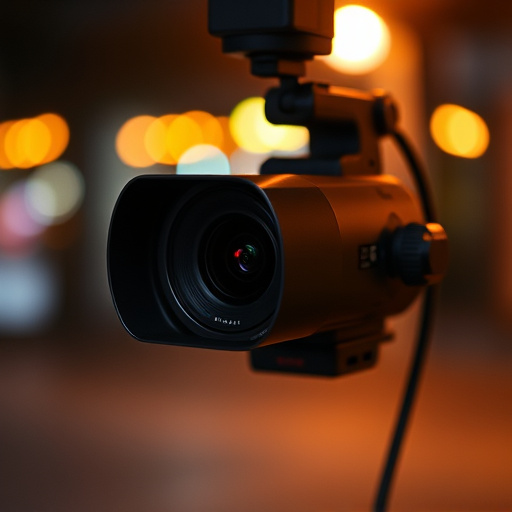Battery-operated hidden childcare cameras pose a significant threat to privacy in homes and daycare centers, prompting a push for proactive measures. Detection involves recognizing signs, visual inspections, and specialized equipment like RF analysis, IR imaging, and thermal detection. Combating this issue requires stringent security, regular inspections, employee background checks, parental vigilance, and legislative action targeting hidden cameras in sensitive areas. Advanced technologies aid in uncovering these stealthy gadgets, while homeowners must navigate legalities, best practices, and privacy considerations to maintain a safe environment.
“Uncover the insidious threat of microphone bug sweeping in the comfort of your home. This comprehensive guide delves into the fundamental techniques of detection, shedding light on the growing concern of battery-operated hidden cameras in childcare settings. From basic identification methods to advanced tech for hidden microphones, we explore practical solutions. Additionally, legal insights and best practices ensure your privacy while offering a safe haven for children. Stay informed about these stealthy intrusions and take proactive steps towards a secure domestic environment, especially considering the rise of battery-operated hidden childcare cameras.”
- Understanding Microphone Bug Sweeping: The Basics of Detection
- Battery Operated Hidden Cameras in Childcare Settings: A Concern and Solution
- Advanced Techniques for Identifying Hidden Microphones
- Ensuring Privacy: Legal Considerations and Best Practices for Home Safety
Understanding Microphone Bug Sweeping: The Basics of Detection
Microphone bug sweeping, also known as audio surveillance or hidden listening devices, involves the clandestine placement of tiny microphones to intercept and record conversations. These hidden childcare cameras, often battery operated, are designed to fit unobtrusively into everyday objects like books, pens, or even toys. Understanding how these bugs work is crucial for detection, especially in sensitive environments like homes or daycare centers.
The basics of microphone bug sweeping detection include recognizing potential signs of hidden audio devices. This can involve visually inspecting areas where a camera might be concealed and using specialized equipment to detect any unusual electromagnetic signals. Professionals also employ advanced techniques such as radio frequency (RF) analysis, infrared (IR) imaging, and thermal detection to uncover these clandestine devices. Regular maintenance and awareness are key to ensuring the safety and privacy of personal spaces from such invasive listening devices.
Battery Operated Hidden Cameras in Childcare Settings: A Concern and Solution
In recent years, the use of battery-operated hidden cameras in childcare settings has raised significant concerns among parents and regulatory bodies alike. These discreet devices, often placed in toys or other everyday items, are designed to capture footage surreptitiously, posing a serious ethical dilemma. The presence of such cameras invades privacy and fosters an atmosphere of distrust, especially when children are involved. Parents entrust childcare providers with their most precious possessions—their children—and expect a safe, nurturing environment. However, the discovery of hidden cameras can erode this trust, leading to heightened anxiety and suspicion.
Addressing this issue requires a multi-faceted approach. Firstly, childcare centers should implement robust security measures that prevent the installation of unauthorized devices. Regular inspections and employee background checks can deter potential perpetrators. Additionally, parents can stay vigilant by being aware of the latest camera technologies and reporting any suspicious items to authorities. Many countries are now introducing legislation specifically targeting the use of hidden cameras in sensitive areas like schools and daycares, reflecting a growing awareness of this pressing issue. By combining these proactive steps, both parents and institutions can ensure a safer, more transparent environment for children.
Advanced Techniques for Identifying Hidden Microphones
In the quest to uncover hidden surveillance devices, such as battery-operated childcare cameras, advanced techniques have been developed to detect even the most stealthy microphones. One powerful method involves using specialized audio detectors that can pick up on subtle electromagnetic signals emitted by these hidden gadgets. These detectors are designed to identify unusual electronic signatures, which may be imperceptible to the human ear but can give away the presence of a microphone.
Another cutting-edge approach is to employ thermal imaging technology. Hidden cameras and microphones often generate residual heat due to their power consumption, creating slight temperature variations in their surroundings. Thermal scanners can detect these anomalies, revealing the exact locations of hidden devices. This technique is particularly useful for identifying miniature surveillance equipment that might be concealed in everyday objects or placed strategically within a room.
Ensuring Privacy: Legal Considerations and Best Practices for Home Safety
In the home, ensuring privacy is paramount, especially with the prevalence of sophisticated audio surveillance equipment. When employing battery-operated hidden childcare cameras or any form of bug sweeping detection, it’s crucial to adhere to legal considerations and best practices for home safety. This involves understanding and respecting privacy laws that govern the use of such devices. In many jurisdictions, there are strict regulations on the placement and operation of hidden cameras, particularly in areas where individuals reasonably expect privacy, like bedrooms or bathrooms.
Best practices suggest obtaining consent from all parties involved, especially children, when setting up surveillance equipment. Additionally, clearly communicating the presence of these devices is essential to avoid any legal complications. Homeowners should also be mindful of potential false positives and ensure that the detected ‘bugs’ are genuine security threats before taking any action. Regularly updating security systems and keeping up with privacy laws are vital steps in maintaining a safe home environment while preserving privacy.
Microphone bug sweeping has become a significant concern, especially in sensitive areas like childcare settings. The presence of battery-operated hidden cameras raises privacy issues and necessitates advanced detection techniques. By understanding the basics of microphone bug sweeping and adopting legal best practices, homeowners can ensure their safety without compromising privacy. It’s crucial to stay informed about emerging technologies and their potential misuse to maintain a secure environment for families.
